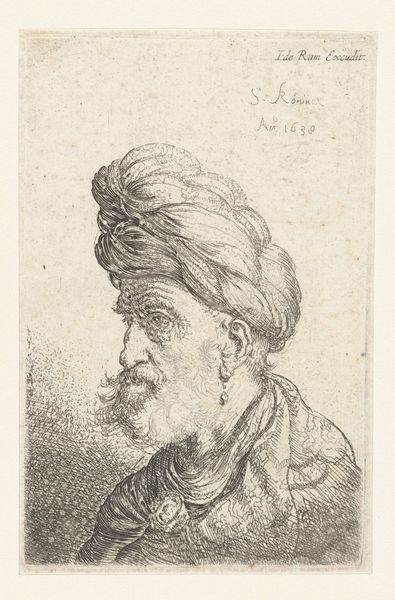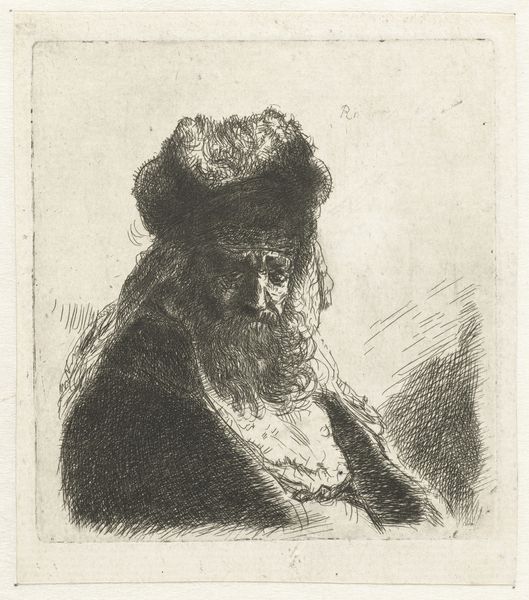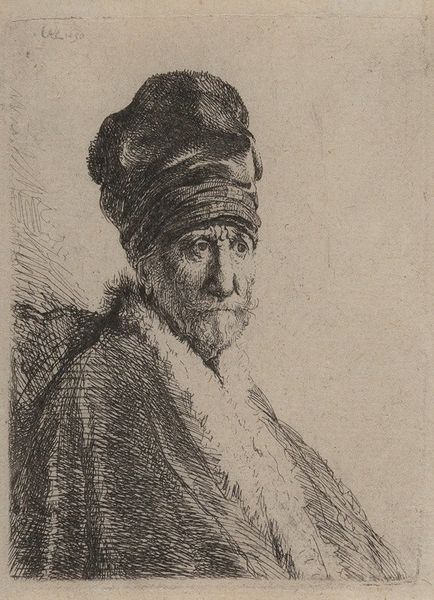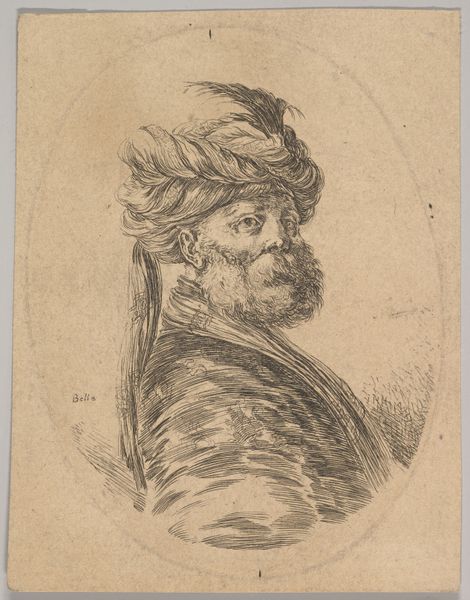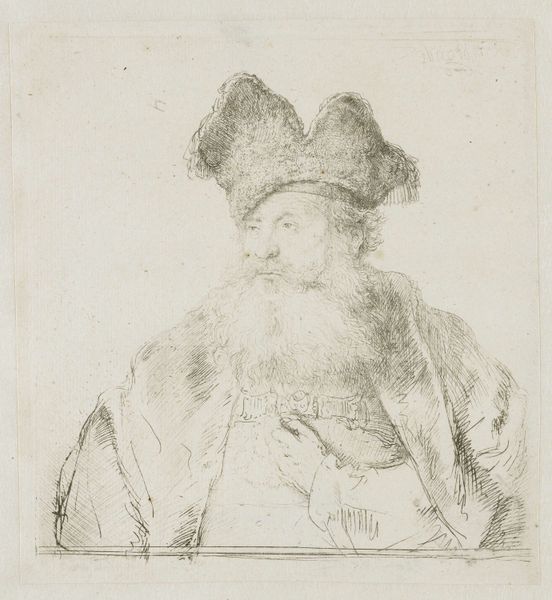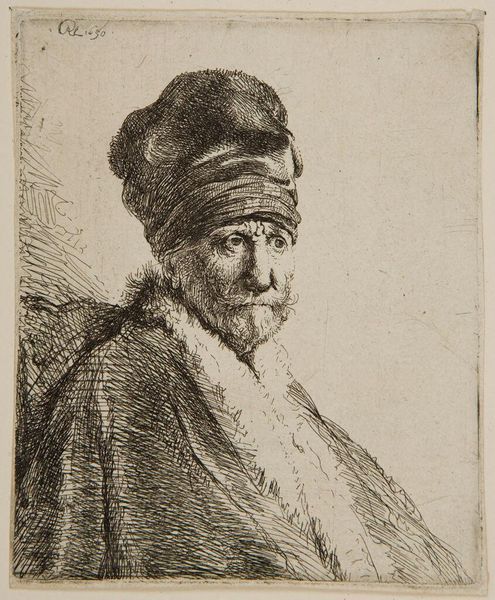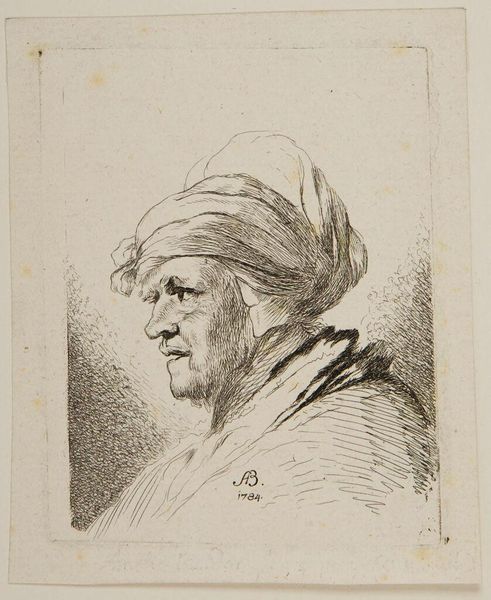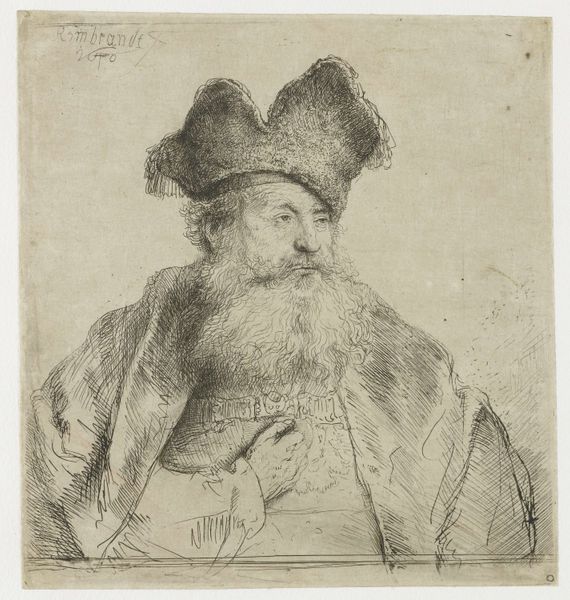
Hoofd van een Turkse man met baard en tulband, naar rechts gewend 1620 - 1664
0:00
0:00
stefanodellabella
Rijksmuseum
print, etching
#
portrait
#
baroque
# print
#
etching
#
figuration
#
line
#
history-painting
Dimensions: height 124 mm, width 159 mm
Copyright: Rijks Museum: Open Domain
Stefano della Bella made this etching, Head of a Turkish Man with Beard and Turban, sometime in the mid-17th century. It presents a quickly sketched, yet intriguing figure. The image is more than just a portrait. It's a window into the cultural fascinations of 17th-century Europe. As the Ottoman Empire loomed large on Europe's borders, interest in Turkish culture grew, but it was often filtered through a lens of fear and fascination. The turban, prominently featured here, becomes a symbol of the "exotic" and "other." Della Bella probably made this print in Florence or Paris, where he was connected to courtly artistic circles, and where an officially sanctioned orientalism was in vogue. The inscription on the print, "Avec privilege du Roy," indicates that it was produced with royal approval and protection, which shows the institutional context that allowed this image to be made and distributed. To understand this work fully, we must ask: what social function did images like this serve? Research into period travelogues, costume books, and diplomatic records can reveal more about the complex relationship between Europe and the Ottoman world. Art is always contingent on its social and institutional context.
Comments
No comments
Be the first to comment and join the conversation on the ultimate creative platform.

